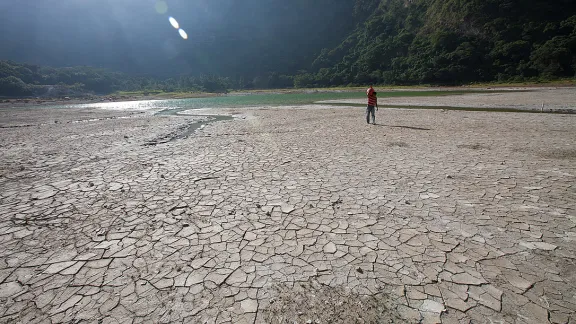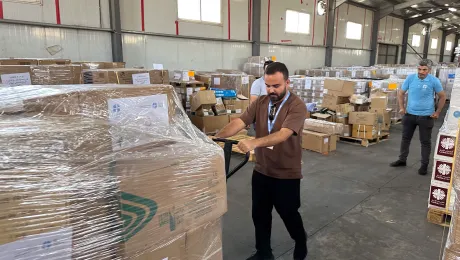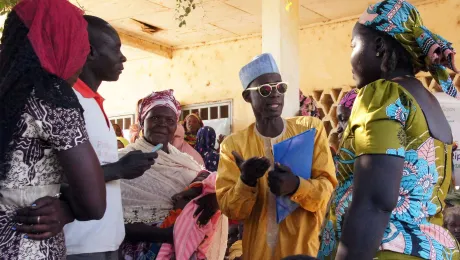
At the lagoon of AlegrÃa, Usulután, El Salvador, water levels have dropped dramatically. Photo: LWF/Sean Hawkey
Drought Linked to El Niño Damages Bean and Corn Crops
(LWI) – Low rainfall linked to the El Niño weather phenomenon has led to one of the worst droughts in decades in parts of Central America, causing widespread damage to bean and corn crops, the region’s staple foods, and leaving as many as 2.81 million people struggling to feed themselves, according to the United Nations World Food Program (WFP).
Together with its partners in the ACT Alliance, The Lutheran World Federation (LWF) is seeking to support people affected by the drought with food aid and water harvesting as well as by measures aimed at reenergizing agricultural production. The drought, which is also affecting South America, has been particularly hard on the so-called "dry corridor" of Central America, which includes southern Guatemala, northern Honduras and western El Salvador.
In El Salvador, an estimated 100,000 families have been affected and 25,000 face critical conditions of food insecurity, according to the WFP. The El Salvadoran government has declared a national state of emergency following the loss of 90% of the annual bean crop and up to 30% of the annual corn harvest.
The Honduran government has also declared a state of emergency in the dry corridor. The communities most impacted by the lack of rainfall are located in 64 municipalities across 10 departments, affecting an estimated 76,712 families. 25,000 families in the Departments of La Paz, Francisco Morazán, El Paraíso, Choluteca, and Valle are expected to suffer the worst consequences of the drought.
Meanwhile, in Nicaragua, the Departments of Estelí, Madríz, Chinandega, and Nueva Segovia have been the ones hit hardest, where 75% of the first corn crop has been lost. An estimated 100,000 families have been most affected in 65 municipalities.
El Niño, which can last more than a year, significantly raises surface temperatures in the central and eastern areas of the tropical Pacific Ocean, a phenomenon linked to major climate fluctuations around the world.


